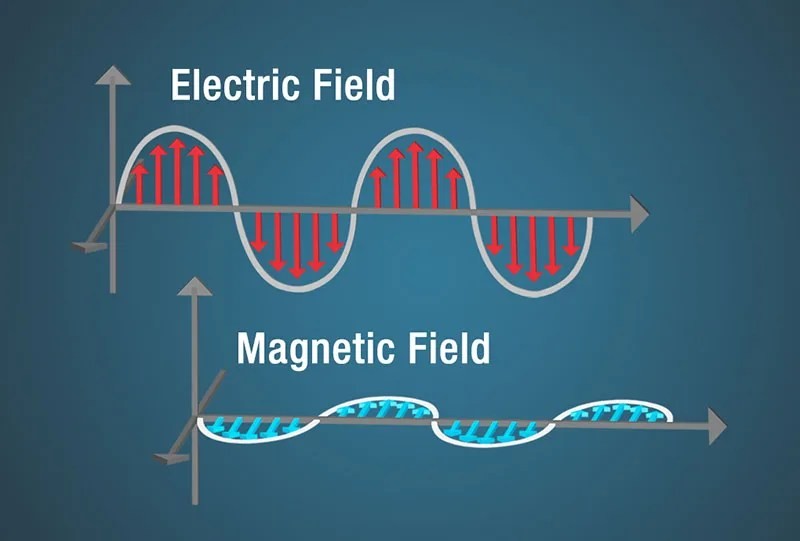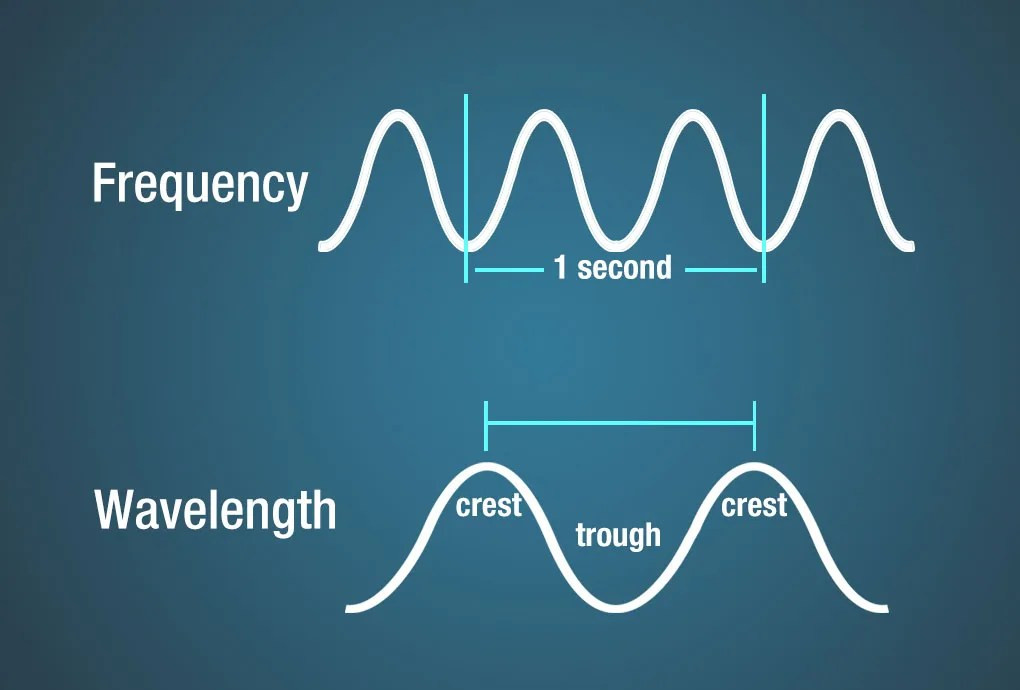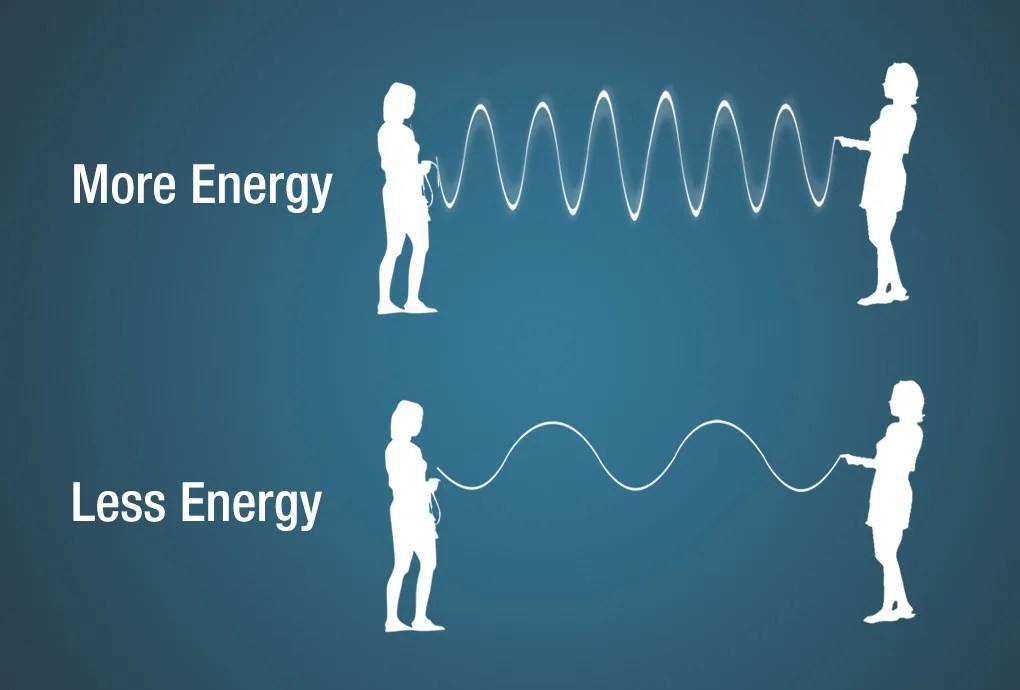Are you curious about Which Waves Can Travel Through Space and how this knowledge can enhance your travel experiences, especially in a vibrant destination like Vietnam? At SIXT.VN, we’ll explain which wave’s travel through space, electromagnetic waves, opening up possibilities for communication and exploration. Let’s explore the fascinating world of wave physics and how it connects to your adventures!
1. What Types of Waves Can Propagate Through the Vacuum of Space?
Electromagnetic waves, unlike mechanical waves, possess the unique ability to travel through the vacuum of space. These include radio waves, microwaves, infrared, visible light, ultraviolet, X-rays, and gamma rays. Without these waves, space exploration, communication, and even enjoying the sunset on a Vietnamese beach would be impossible!
1.1. Understanding Electromagnetic Waves
Electromagnetic (EM) waves are disturbances that propagate through space by the interaction of electric and magnetic fields. These waves are characterized by their frequency and wavelength, which are inversely proportional. High-frequency waves have short wavelengths, and low-frequency waves have long wavelengths.
According to NASA, electromagnetic waves do not require a medium to travel, unlike mechanical waves such as sound. This fundamental property enables them to traverse the vacuum of space, making possible numerous applications vital to our modern world.
 Electromagnetic spectrum showing different types of waves with varying wavelengths and frequencies
Electromagnetic spectrum showing different types of waves with varying wavelengths and frequencies
1.2. Why Mechanical Waves Cannot Travel Through Space
Mechanical waves, such as sound waves or water waves, require a medium (solid, liquid, or gas) to propagate because they transfer energy through the vibration of particles in that medium. Space, being a vacuum, lacks these particles, preventing mechanical waves from traveling through it. If you’re planning a trip to Vietnam, remember that while you can enjoy the sound of waves on its beautiful beaches, sound itself cannot travel through the vacuum of space.
2. What Are the Key Properties of Electromagnetic Waves?
Electromagnetic waves exhibit several key properties:
- Velocity: EM waves travel at the speed of light (approximately 299,792,458 meters per second) in a vacuum.
- Frequency: The number of wave cycles that pass a point in one second, measured in Hertz (Hz).
- Wavelength: The distance between two consecutive crests or troughs of a wave, typically measured in meters.
- Energy: The energy of an EM wave is directly proportional to its frequency. High-frequency waves carry more energy.
- Polarization: The orientation of the electric field vector in the wave.
These properties dictate how EM waves interact with matter, influencing their use in various applications, from telecommunications to medical imaging.
3. How Do Electromagnetic Waves Facilitate Space Communication?
Electromagnetic waves are fundamental to space communication. Radio waves, a type of EM wave, are widely used to transmit signals between Earth and spacecraft due to their ability to travel long distances through the vacuum of space with minimal loss of signal strength.
3.1. Radio Waves in Space Communication
Radio waves have long wavelengths and low frequencies, making them ideal for long-distance communication. NASA uses radio waves to communicate with rovers on Mars, relaying data and commands across millions of kilometers. This same technology allows you to stay connected while exploring Vietnam, using mobile networks that rely on radio waves to transmit your calls and data.
3.2. Satellite Communication and GPS
Satellites use EM waves to provide a variety of services, including communication, navigation, and weather forecasting. GPS satellites, for instance, transmit signals via radio waves that your smartphone uses to determine your location. This is invaluable when navigating the bustling streets of Hanoi or exploring the serene landscapes of Ha Long Bay with SIXT.VN.
4. What is the Electromagnetic Spectrum and its Significance?
The electromagnetic spectrum is the range of all types of EM radiation, arranged by frequency and wavelength. It includes, from lowest to highest frequency:
- Radio waves
- Microwaves
- Infrared radiation
- Visible light
- Ultraviolet radiation
- X-rays
- Gamma rays
Understanding the EM spectrum is crucial because each type of wave has unique properties and applications.
4.1. Different Types of Electromagnetic Waves and Their Uses
- Radio Waves: Used in broadcasting, mobile communication, and radar systems.
- Microwaves: Used in microwave ovens, satellite communication, and weather forecasting.
- Infrared Radiation: Used in thermal imaging, remote controls, and heating applications.
- Visible Light: The portion of the EM spectrum that the human eye can detect, enabling us to see the world around us.
- Ultraviolet Radiation: Can cause sunburns and skin cancer but also used in sterilization and vitamin D production.
- X-Rays: Used in medical imaging and security scanning.
- Gamma Rays: Used in cancer treatment and sterilization.
4.2. Practical Applications of the EM Spectrum in Daily Life
The EM spectrum has countless applications that impact our daily lives:
- Medical: X-rays and MRI (which uses radio waves) for diagnostics, radiation therapy for cancer treatment.
- Communication: Radio and microwaves for mobile phones, TV broadcasting, and internet access.
- Navigation: GPS uses radio waves to determine location.
- Security: X-ray scanners at airports for detecting prohibited items.
- Energy: Solar panels convert visible light into electricity.
 Diagram of the electromagnetic spectrum showing different types of waves and their applications
Diagram of the electromagnetic spectrum showing different types of waves and their applications
5. How Does Visible Light Travel Through Space and Reach Us?
Visible light, the portion of the electromagnetic spectrum that our eyes can detect, travels through space from the sun to Earth. This light allows us to see the vibrant colors of a Vietnamese market or the stunning landscapes of the Mekong Delta.
5.1. The Journey of Sunlight from the Sun to Earth
Sunlight is generated by nuclear fusion reactions in the sun’s core. These reactions produce EM radiation, including visible light, which travels through the vacuum of space to reach Earth in about 8 minutes and 20 seconds. This process enables all life on Earth and allows us to experience the beauty of destinations like Vietnam.
5.2. The Role of Visible Light in Photography and Tourism
Visible light is essential for photography, allowing us to capture the memories of our travels. Whether you’re photographing the ancient architecture of Hoi An or the bustling streets of Hanoi, visible light makes it all possible. Tourism heavily relies on visible light to showcase the beauty of different locations, enticing travelers to explore new destinations.
6. What Role Do Satellites Play in Utilizing Electromagnetic Waves?
Satellites are crucial in utilizing electromagnetic waves for various applications, including communication, navigation, and Earth observation. They orbit the Earth, relaying signals and collecting data that benefit numerous industries and daily activities.
6.1. Satellite Communication Systems
Satellite communication systems use EM waves to transmit data over long distances. These systems are essential for global communication, connecting remote areas, and providing internet access.
6.2. Earth Observation and Remote Sensing
Satellites equipped with remote sensing technology use EM waves to monitor Earth’s surface and atmosphere. This data is used for weather forecasting, environmental monitoring, and disaster management. According to the Vietnam National Space Center (VNSC), remote sensing data is also used to monitor agricultural land use and water resources in the Mekong Delta.
7. How Do Telescopes Use Electromagnetic Waves to Explore Space?
Telescopes use electromagnetic waves to observe and study celestial objects. Different types of telescopes are designed to detect various parts of the EM spectrum, providing astronomers with a comprehensive understanding of the universe.
7.1. Radio Telescopes
Radio telescopes detect radio waves emitted by celestial objects. These telescopes are often located in remote areas to minimize interference from human-made radio signals. The Very Large Array (VLA) in New Mexico, USA, is a famous example of a radio telescope that has contributed significantly to our understanding of the cosmos.
7.2. Optical Telescopes
Optical telescopes detect visible light, providing images of stars, galaxies, and planets. These telescopes are often located on high mountains to reduce atmospheric distortion. The Hubble Space Telescope, orbiting above Earth’s atmosphere, provides unparalleled views of the universe.
7.3. Infrared and X-Ray Telescopes
Infrared telescopes detect infrared radiation, which can penetrate dust clouds in space, revealing objects that are hidden from optical telescopes. X-ray telescopes detect X-rays emitted by high-energy phenomena, such as black holes and neutron stars. The James Webb Space Telescope, launched in 2021, is designed to observe infrared light, providing new insights into the early universe.
8. What are the Potential Hazards of Electromagnetic Waves?
While electromagnetic waves are essential for many applications, certain types can pose health hazards:
- Ultraviolet Radiation: Prolonged exposure to UV radiation can cause sunburn, skin cancer, and cataracts.
- X-Rays and Gamma Rays: High doses of X-rays and gamma rays can damage cells and DNA, leading to cancer and other health problems.
- Microwaves: High levels of microwave radiation can cause burns and tissue damage.
8.1. Safety Measures to Minimize Exposure to Harmful EM Waves
To minimize exposure to harmful EM waves:
- Use sunscreen to protect your skin from UV radiation.
- Limit your time in the sun, especially during peak hours.
- Follow safety guidelines when using electronic devices that emit microwaves or X-rays.
- Ensure that medical imaging equipment is properly calibrated and used according to safety protocols.
9. How Can Understanding Electromagnetic Waves Enhance Your Travel Experiences?
Understanding electromagnetic waves can significantly enhance your travel experiences, especially in a technologically advanced world. From using GPS to navigate new cities to staying connected with loved ones via mobile networks, EM waves play a crucial role in modern travel.
9.1. Using GPS and Mobile Networks for Navigation and Communication
GPS, which relies on radio waves transmitted by satellites, is an invaluable tool for navigation. It helps you find your way around unfamiliar cities, explore remote areas, and discover hidden gems. Mobile networks, also based on radio waves, allow you to stay connected with friends and family, share your travel experiences on social media, and access essential information.
9.2. Enhancing Photography with Understanding of Light
Understanding how light interacts with objects can greatly improve your photography skills. Knowing how to use natural light to your advantage, understanding the effects of different lighting conditions, and using filters to control the amount and type of light entering your camera can help you capture stunning images of your travels.
9.3. Enjoying the Natural Beauty Enabled by Visible Light
Visible light allows us to appreciate the beauty of the natural world. Whether you’re watching a sunset over the ocean, exploring a colorful garden, or hiking through a scenic landscape, visible light makes it all possible. In Vietnam, the vibrant colors of the bustling markets, the lush green rice paddies, and the stunning sunsets over the South China Sea are all brought to life by visible light.
 Sunset on a beach with visible light creating vibrant colors
Sunset on a beach with visible light creating vibrant colors
10. What Future Innovations Can We Expect in Electromagnetic Wave Technology?
Electromagnetic wave technology is constantly evolving, with new innovations emerging all the time. Some exciting future developments include:
- 5G and 6G Networks: These next-generation mobile networks will offer faster speeds, lower latency, and greater capacity, enabling new applications such as virtual reality, augmented reality, and the Internet of Things (IoT).
- Quantum Communication: This technology uses quantum properties of light to create secure communication channels that are impossible to hack.
- Advanced Medical Imaging: New imaging techniques using different parts of the EM spectrum will allow for earlier and more accurate diagnosis of diseases.
- Space Exploration: Advanced telescopes and communication systems will enable us to explore the universe in greater detail and communicate with spacecraft on distant missions.
10.1. Potential Impact of These Innovations on Travel and Exploration
These innovations have the potential to transform travel and exploration:
- Seamless Connectivity: 5G and 6G networks will provide seamless connectivity wherever you go, allowing you to stay connected, access information, and share your experiences in real-time.
- Virtual and Augmented Reality: VR and AR technologies will enhance travel experiences by providing immersive virtual tours of destinations, interactive maps, and real-time information about landmarks and attractions.
- Safer and More Efficient Transportation: Advanced radar and communication systems will improve the safety and efficiency of transportation systems, making travel faster, easier, and more reliable.
Conclusion
Understanding which waves can travel through space—electromagnetic waves—is not just a scientific curiosity but a practical advantage for modern travelers. From the GPS guiding your adventures to the mobile networks keeping you connected, EM waves are integral to our travel experiences. By understanding these principles, you can enhance your exploration of destinations like Vietnam.
Ready to explore Vietnam? Let SIXT.VN be your guide. We offer a range of services designed to make your trip seamless and enjoyable.
SIXT.VN: Your Partner for Exploring Vietnam
- Airport Transfers: Start your trip stress-free with our reliable airport transfer services.
- Hotel Bookings: Find the perfect accommodation to suit your needs and budget.
- Tour Packages: Discover the best of Vietnam with our curated tour packages.
- Car Rentals: Explore at your own pace with our flexible car rental options.
- Flight Bookings: Get the best deals on flights to Vietnam.
Contact Us:
- Address: 260 Cau Giay, Hanoi, Vietnam
- Hotline/WhatsApp: +84 986 244 358
- Website: SIXT.VN
Don’t just travel—explore with knowledge and convenience. Let SIXT.VN help you make the most of your journey!
Frequently Asked Questions (FAQ)
1. Which waves can travel through space?
Electromagnetic waves, including radio waves, microwaves, infrared, visible light, ultraviolet, X-rays, and gamma rays, can travel through the vacuum of space.
2. Why can’t mechanical waves travel through space?
Mechanical waves require a medium (solid, liquid, or gas) to propagate, while space is a vacuum.
3. How do satellites use electromagnetic waves?
Satellites use EM waves for communication, navigation, Earth observation, and various other applications.
4. What is the speed of electromagnetic waves in space?
Electromagnetic waves travel at the speed of light, approximately 299,792,458 meters per second in a vacuum.
5. How do telescopes use electromagnetic waves?
Telescopes use EM waves to observe and study celestial objects, with different types of telescopes designed to detect various parts of the EM spectrum.
6. What are the potential hazards of electromagnetic waves?
Certain types of EM waves, such as ultraviolet radiation, X-rays, and gamma rays, can pose health hazards with prolonged or high-dose exposure.
7. How can I protect myself from harmful electromagnetic waves?
Use sunscreen, limit sun exposure, and follow safety guidelines when using electronic devices that emit microwaves or X-rays.
8. How does GPS use electromagnetic waves to determine my location?
GPS satellites transmit signals via radio waves that your smartphone uses to calculate your location.
9. Can understanding electromagnetic waves enhance my travel experiences?
Yes, understanding EM waves can enhance your travel experiences by allowing you to use GPS for navigation, stay connected with mobile networks, and improve your photography skills.
10. What are some future innovations in electromagnetic wave technology?
Future innovations include 5G and 6G networks, quantum communication, advanced medical imaging, and improved space exploration technologies.



